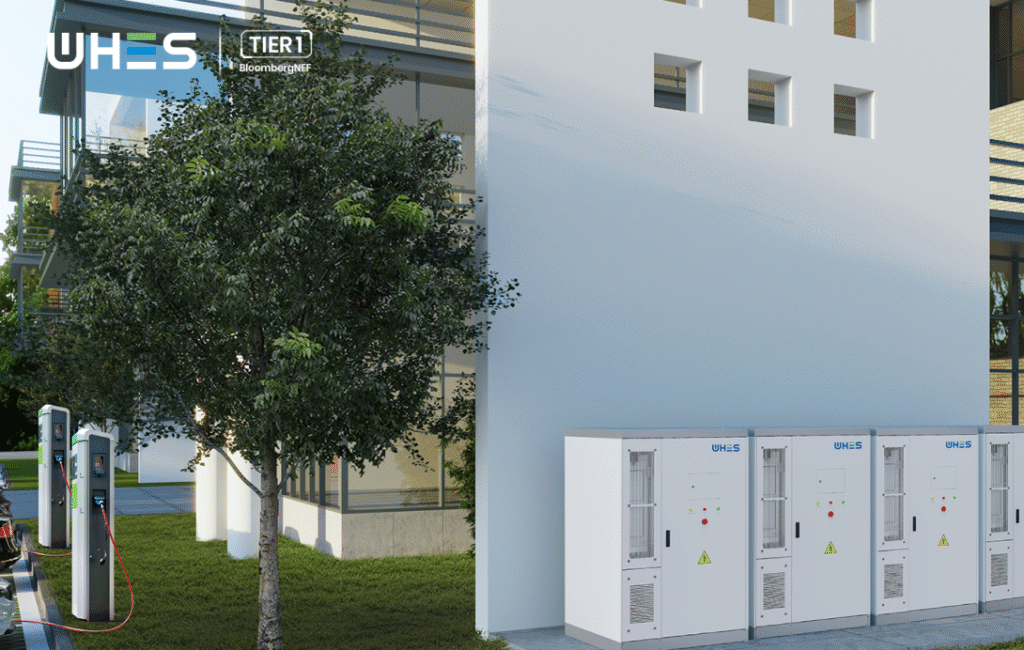The Smart Energy Council applauds the Australian Government and all State and Territory Ministers for agreeing to an expanded Capacity Investment Scheme, a critical program for the energy transition in Australia. We appreciate the work the Department of Climate Change, Energy, Environment and Water (DCCEEW) has done in developing the scheme and appreciate its commitment to ongoing consultation with the renewable energy industry.
The Smart Energy Council, our large-scale renewable energy members, and partners across industry and civil society played a key role in the development of the Capacity Investment Scheme model in late 2022.
Today we are very pleased to see that policy initiative develop into the primary investment driver to reach 82% renewables by 2030. The Smart Energy Council will continue to advocate for strong ambitious policy to accelerate renewable energy investment, to see Australia become a renewable energy superpower, and meet and beat our emission targets in electricity and across the entire economy. The majority of our decarbonisation in this country has to start with bold and consistent investment in renewable energy generation and storage.
Our Submission will address 5 key issues:
- Renewable Energy Transformation Agreements (RETAs) and the recommendation to limit Merits Appeal for projects under the CIS
- Social license and local content requirement recommendations
- Lock in the 50% cap on revenue sharing
- Removal of the LOR3 requirement or an amended compromise
- Technology Neutrality and long-term considerations for scheme evolution
Renewable Energy Transformation Agreements
The Smart Energy Council recognises that the social license and approval processes getting bogged down in various local matters may represent the greatest strain on renewable energy acceleration today. We have called on the Federal Government to take leadership to ensure the necessary accelerated renewable energy build out in each state is matched by appropriate approval processes and standards. We congratulate Minister Bowen for taking and responding to this call to action by adding the Renewable Energy Transformation Agreements to the Capacity Investment Scheme role out. This instrument must be leveraged effectively to make our planning laws and regulations consistent with our renewable energy targets.
The planning laws and the approach to planning in New South Wales, in particular, is a major barrier to the roll out of renewable energy projects in that State.
We cannot reach 82% renewables and a reliable renewable energy grid when projects are pulled down into bureaucratic drawn out processes for several years.
Our planning laws and regulations must:
reflect the urgency to reach 82% renewable energy by 2030, create a cost effective pathway for new energy developments to provide lower cost energy to all consumers by cutting out coal faster with renewables and lastly, our planning laws must reflect our national challenge to mitigate Climate Change that threatens the Australian way of life. Climate Change is no longer a taboo in energy circles, it is in our national energy objectives, and it must inform the pace at which we transform our energy system for the better.
Recommendation
While each state will have their own bespoke needs, the Smart Energy Council is calling for the Federal Government, through its Renewable Energy Transformation Agreements to limit the use of Merit appeals, as done in Victoria, that seek to block or stop renewable energy projects, delivered through the CIS.
It is clear more must be done to deliver nature positive projects, across an ecosystem, as well as deliver projects that genuinely share benefits with local communities and First Nations. Under those circumstances; reasonable and fair measures in place to deliver benefit sharing; it is imperative that projects are then enabled by our planning systems to deliver as energy projects which contribute to matters of national significance.
CIS projects are crucial to Australia’s ongoing national prosperity. Low cost and reliable energy for our businesses is the lifeblood of our economic growth and wealth. That national interest to provide businesses with their most basic utility must be prioritised in a landscape of increasing bad faith actors who seek to slow down the energy transition for nefarious purposes, isolated from real local issues. The very open basis for Merit appeals in the courts against renewable energy projects that have been selected to support the basic needs of our electricity system is inconsistent with our renewable energy objectives. These projects cannot be drawn down by a myriad of bad faith interest groups, hoping to bury and kill renewable energy in the courts.
The legal protections afforded to communities concerns around renewables is best delivered through well-considered planning laws that reflect our decarbonisation goals. The solution is not providing an open season in the courts to challenge crucial projects to our electricity grid and undermine the decisions of our Climate Change and Energy Ministers made on the advice of experts.
Social License and Local Content Requirements
The Smart Energy Council welcomes the principle set out in the Design paper. The Principle states:
“[To] Facilitate shared benefits to regional communities, support the industries that will drive our future economy and help First Nations people preserve their unique culture and heritage and remain on Country.”
Nonetheless the revised tender process for the Capacity Investment Scheme presents a valuable opportunity to bolster supply chain diversity especially in those areas identified by the Federal Government for focused manufacturing support. It is clear broad local engagement and or content requirements can be put in place immediately to incorporate local workforces into the projects under the Capacity Investment scheme, and is already undertaken in similar schemes in Victoria.
With respect to the advanced technology and hardware used in energy projects, local content requirements should be put in place that mirror the focus areas for support in manufacturing and ‘supply side’ of the energy value chain. For example, Australia is likely to see various forms of support progress for advanced battery cell manufacturing and solar cells. Materials supply in local content requirements should also be framed towards industries where Australia already has a natural advantage or capacity, such as in steel welding.
Co-ordinating the government manufacturing incentives with the demand side incentives (local content rules in the CIS) on selected thematic parts of the clean energy industry will drive long-term and clear investment signals in selected strategic areas for both local manufacturers’ as well as for developers.
As the Federal Treasurer has alluded, Australia does not have the capacity to boil the ocean, and incentivise everything like the USA has done with the IRA Act. Australia needs to invest strategically in areas where we can compete Internationally or provide cost effective solutions to the domestic demand market.
This is why local content requirements should mirror the strategic focus areas which the Federal and State governments will look to support on the supply side.
Ratcheted Incentives
It is evident that today, Australia does not have the capacity to feed the large-scale renewable energy industry with the complex range of hardware and sophisticated technology to build the energy grid 3 times faster than the previous decade. But we can plan for the future.
Recommendation
Industries strategically chosen for manufacturing support should be reflected and focused on within the local content requirements in the Capacity Investment Scheme. As production capabilities improve and scale, the local content requirements should rachet up in line with the improving capacity of Australian Manufacturing.
Modest local content requirements must be in place immediately to build Australian manufacturing and clean energy workforce capacity at scale.
These LCR requirements should begin broad, taking advantage of existing Australian capacity which can be utilised in renewable energy projects. This broad beginning should be supplemented with a ratcheting up mechanism that becomes more onerous over time, on the aforementioned industrial focus areas (eg. Batteries, solar cells, steel). This would provide the rapidly emerging manufacturing facilities in clean energy to plan their facilities expansion with a quality supply of offtake as their improved or expanded facilities come into operation. A ratcheted mechanism also allows developers the time to develop the offtake and or procurement arrangements they need to meet more onerous local content requirements in the future.
A planned, ratcheted LCR requirement over time addresses the chicken and egg problem of who is to commit to investment first, the off takers (developers) or the suppliers (manufacturers)
If this LCR mechanism begins broad and modest, and then increases the LCR % over the current planned life of the CIS, we expect it can contribute to building jobs and a critical skills base for Australia’s energy transition, facilitate social license and prepare Australia for international opportunities as a renewables and cleantech superpower, all the while keeping local content price shocks to a reasonable minimum.
Financial Scheme Design
Revenue Sharing Model
The Implementation Paper has adjusted the maximum revenue sharing threshold to 50%. The Smart Energy Council strongly agrees with this position and would like to see that the revenue sharing ceiling is locked in at the new proposed 50%. Any revenue return over this threshold will likely see participating projects refuse to optimise the use of their assets, as the additional marginal returns are insignificant over the revenue sharing ceiling.
Lack of Reserve Events (LOR3)
The current CIS paper sets out that for LOR3 events all participating storage projects must have at least 50% capacity available for such events, scheduled or unscheduled.
Renewable Energy Storage projects which have historically relied on FCAS markets for their revenue, are market driven to charge and discharge in sync with high wholesale prices and bottlenecks of supply and demand. Our membership have provided a strong indication that their projects respond more than adequately in periods of insufficient capacity and the rigid LOR3 requirement is unnecessary. In addition, unscheduled LOR3 events, which dictate certain availability requirements may artificially concentrate charging in the lead up to LOR3 events, thereby extending or converging supply shortages in the wholesale market. In this context the Smart Energy Council does not see significant utility in the LOR3 requirement, given the unwanted outcomes it might drive, and a lack of clarity as to how it will do anything more than the market signals that batteries already optimize for.
However, in the case where the LOR3 requirement proceeds, we urge you to consider the following recommendation:
- For LOR3 Forecasts for 24 hours ahead of time, the necessary capacity of a storage system Is 50%.
- If the LOR3 forecast is less than 24 hours, storage facilities are obliged to provide the capacity that they have at the time of notice for the LOR3 event , even if that capacity is less than 50%.
This should avoid the worst of perverse high charge rates in the build up to LOR3 events, and allow storage projects to contribute competitively to energy stability in and around LOR3 events.
Technology Neutrality
The scheme design must work to include a broad range of technology solutions, enabling real, open access to the scheme to encourage a diverse ecosystem of energy storage and generation in Australia’s energy ecosystem.
We encourage the development of the CIS scheme to include VPP’s as a part of the scheme in the future, noting AEMO’s lowest cost pathway under the ISP requires at least 50% of distributed energy storage to be orchestrated.
Going forwards, without an external mechanism to drive medium to long duration storage, there must be serious consideration for how the Capacity Investment Scheme could drive investment in medium to long duration storage in Australia.
Download our Capacity Investment Scheme Consultation Submission.



